The Sony a7IV was released back in 2021 and continued to build on the success enjoyed by the Sony a7III as one of their most popular mid-range full-frame mirrorless cameras.
The Sony a6700 APS-C camera released in July 2023 supersedes the Sony a6600 and brings with it a ton of new features that might even make it an attractive alternative or companion to the a7IV.
In this article I compare all of the differences that you need to know to help you decide which camera is best for your needs as a photographer.

Table of Contents[Hide][Show]
- Summary
- Key Shared Features
- Key Spec Comparison
Key Differences+−
- Sensor and Processor
- ISO Sensitivity
- Still Image Recording Formats
- Video
- Stabilization
- APS-C / Super 35 Mode
- Autofocus
- Shutter
- Drive Speed & Buffer
- Electronic Viewfinder and LCD Display
- Camera Body & Controls
- Full-time DMF
- Focus Bracketing
- Memory Cards
- Battery Life & USB Charging
- Connectivity
- What’s in the Box
- Price
- Conclusion
- Reviews
- Sony A7IV Guides & Resources
- Sony A6700 Guides & Resources
Summary
Thanks to its larger full-frame sensor the a7IV offers improved image quality, more megapixels, uncompressed RAW and better low light performance that the a6700.
Personally I also find the a7IV to be the more comfortable camera to hold in my hands due to its larger dimensions. For fast action shooters the unlimited buffer when shooting with a CFexpress Type A Card is also very helpful.
The dedicated AI Processor in the a6700 helps it to take the win when we compare the autofocus capabilities, with improved algorithms and the ability to recognize insects, cars, trains and airplanes. For its price it offers excellent value for money too.
If you shoot more video than stills then the support of 4K60p on both cameras might be very tempting. However, the a6700 has a slight advantage in the video department with the addition of 4K120p, although this is with a heavy 38% crop. Vloggers might also find the auto framing feature of the a6700 useful.
Key Shared Features
Before we dive into the differences, here’s a list of the key features that they share in common:
- 14-bit RAW image files
- 4K/60p
- Focus map
- 5 axis in-body stabilization
- Microphone and headphone jacks (3.5mm)
- Stereo microphone and speaker
- Digital audio interface
- USB charging
- Dust-and moisture-resistant magnesium-alloy body
- NP-FZ100 battery
- Human, Animal & Bird Eye AF tracking
- Load / Save Settings (CAMSET)
- Anti-Flicker & Variable Shutter
- AF Assist
- Live Streaming / Webcam
- Sony Creators App Support
- Firmware updates via memory card
Key Spec Comparison
First let’s just take a quick look at how the key specifications stack up.
| Specification | Sony A7IV | Sony A6700 |
|---|---|---|
| Sensor: | 33MP Back-Illuminated 35mm Full-frame Image Sensor | 26.0 MP APS-C Back-illuminated Exmor R CMOS |
| Processor: | BIONZ XR | BIONZ XR |
| Stabilization (IBIS): | 5-axis image sensor-shift mechanism delivering a 5.5-steps of shutter-speed compensation. | 5-axis image sensor-shift mechanism delivering a 5-steps of shutter-speed compensation. |
| Electronic Viewfinder (EVF): | 3 686 400 dots | 2 359 296 dots |
| Display (LCD): | 1 036 800 dots vari-angle (Opening Angle: Approx. 176 °., Rotation Angle: Approx. 270 °) | 1 036 800 dots vari-angle (Opening Angle: Approx. 176 °., Rotation Angle: Approx. 270 °) |
| ISO Sensitivity Stills: | ISO 100-51200 (expandable ISO 50 to 51200) | ISO 100 – 32000 (expandable to ISO 50 – 102400) |
| ISO Sensitivity Movies: | ISO 100-51200 equivalent (ISO numbers up to 102400 can be set as expanded ISO) | ISO 100–32000 |
| Movie Resolution Max: | 4K30p / 4k60p (APS-C) | 4k60p / 4k120p |
| Memory Cards: | SD memory card, SDHC memory card (UHS-I/II compliant), SDXC memory card (UHS-I/II compliant), CFexpress Type A memory card | UHS-I/II SD cards |
| Memory Card Slots: | SLOT1: Multi slot for SD (UHS-I/II compliant) memory card / CFexpress Type A card, SLOT2: Slot for SD (UHS-I/II compliant) memory card | One |
| Shutter Speed Still Images: | 1/8000 to 30 s, Bulb | 1/4000 to 30 sec, Bulb (1/8000 electronic). |
| Max Frames Per Second: | 10 fps | 11 fps |
| Price (MRRP) Body Only: | $2,498.00 / £2,399.00 | $1,398.00 / £1,449.00 |
| Price Check: | B&H Photo | Amazon | B&H Photo | Amazon |
Key Differences
Now let’s take a much closer look at the key differences between these two cameras.
Sensor and Processor
The biggest difference between these two cameras is that the a7IV has a full-frame sensor whereas the a6700 has a smaller APS-C sized sensor.
Full-frame sensors are larger than APS-C sensors but bigger isn’t always better and each format has its own key advantages.
The a7IV features a 33.0 megapixel full-frame 35mm back-illuminated Exmor R CMOS sensor that provides high-speed readout, high sensitivity, low noise, and highly accurate color reproduction.
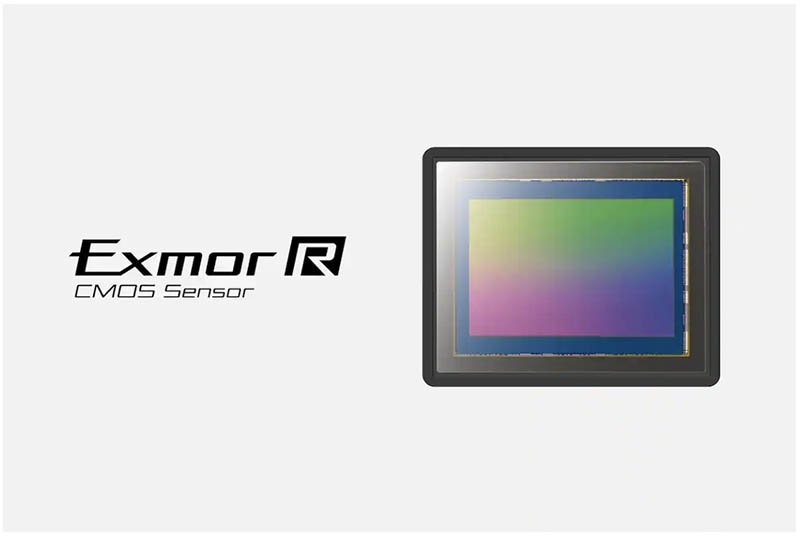
The Sony a6700 features a smaller 26.0 MP APS-C Back-illuminated Exmor R CMOS sensor that can also be found in the Sony FX30 cinema camera.
| Camera | Sensor Size | Megapixels | Resolution (3:2) |
|---|---|---|---|
| Sony A7IV | Full-Frame (35.9 mm × 23.9 mm) | 33.0 MP | 7008 x 4672 |
| Sony A6700 | APS-C size (23.3 mm × 15.5 mm) | 26.0 MP | 6192 × 4128 |
Both cameras share the same BIONZ XR™ processor that delivers up to eight times more processing power than the BIONZ X found in their predecessors.
ISO Sensitivity
When it comes to comparing the ISO performance, the a7IV has a wider ISO range thanks to its larger full-frame sensor which has better light gathering capabilities.
| Sony A7IV | Sony A6700 | |
|---|---|---|
| Normal ISO (Stills): | ISO 100 – 51200 | ISO 100 – 32000 |
| Expanded ISO (Stills): | ISO 50 – 204800 | ISO 50 – 102400 |
| Normal ISO (Movies): | ISO 100 – 51200 | ISO 100 – 32000 |
| Expanded ISO (Movies): | ISO 100 – 102400 | ISO 100 – 32000 |
Still Image Recording Formats
The a7IV supports compressed and uncompressed 14-bit RAW files along with JPEGs. However, this drops to 12 bits during compressed RAW continuous shooting.
The a7IV also supports a RAW lossless compression option with three different sizes, for maximum processing flexibility. However, the maximum burst rate drops from 10 to around 6 fps if you choose to enable it.
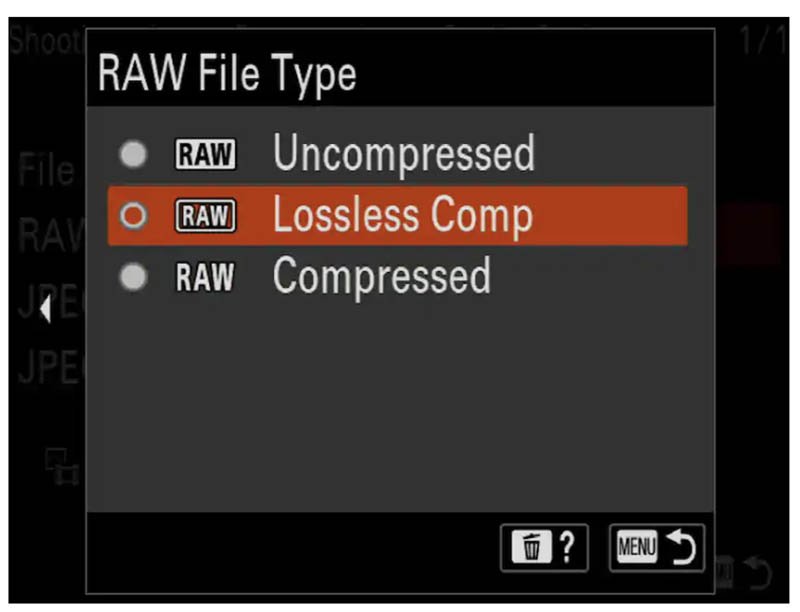
The a7 IV also gains the ability to capture 10-bit HEIF (High Efficiency Image File) images, rather than just the 8-bit JPEGs.
The Sony a6700 does not support uncompressed RAW but does supports JPEG and compressed RAW. It also supports lossless compressed RAW and HEIF file types along with a new Light option for JPEG and HEIF.

Video
Both cameras offer excellent specifications for you video shooters out there.
Although both can shoot 4K60p, the a6700 applies a small 1.04x crop, while the a7IV can record up to 30p with zero crop, but 4K60p is only possible when shooting in APS-C / Super35 mode.
It’s important to note that the field of view will be different between these two cameras, since the a7IV has a full-frame sensor and the a6700 has a APS-C (1.5x crop) sensor.
The a6700 also supports high frame rate recording at up to 120p for 4K QFHD (3840 x 2160) but this is with a 38% crop.
S&Q mode on the a6700 enables recording of slow or quick motion sequences in camera with up to 240 FPS in Full HD. With the a7IV this is limited to 120p in Full-HD.
Both cameras support internal recording in 10-bit 4:2:2, with up to 600Mbps (All-Intra Encoding) and XAVC HS codec option (H.265). Advanced picture profiles such as S-Log2, S-Log3, and Cinetone are also available.
The a7IV offers a full-size HDMI port, whilst the a6700 features a smaller micro HDMI port. Both cameras have a 3.5mm jack for a microphone and headphones as well as digital audio via the multi-interface shoe.
There are some additional shared video features that I think are worth mentioning, these include:
- Dedicated Stills / Movies / S&Q Dial
- Real-time Tracking for Movies
- Active Image Stabilization
- Breathing Compensation
Being the newer camera of the two the a6700 comes with a few features that you won’t find on the a7IV:
Import User LUT files
You can now see how your footage will look in post-processing while you are still shooting. The a6700 allows you to import a custom LUT (Look Up Table) that can be applied to the camera’s monitor image while recording, for a preview of the finished product.
AI Based Auto Framing
The a6700 also gets the AI-based Auto Framing function that was first introduced on the Sony ZV-E1. This basically automatically crops and re-frames the image while using AI to track your subject. This is a really nice feature for Vloggers especially if you are a one man band. Here’s a video from Sony that demonstrates how to use it.
In-camera Time-Lapse / Interval Shooting
The in-camera time-lapse function allows you to create time-lapse videos within the camera itself, with the a7IV this is only possible by using post editing software.
Stabilization
Both cameras feature Sony’s In-Body Stabilization (IBIS). The 5-axis in-body optical image stabilization detects and compensates for camera shake along five different axes for a stabilization equivalent of 5.5 stops of compensation on the a7IV and 5 stops on the a6700.

Both cameras also features Active Mode Image Stabilization. This applies a 1.13x crop to the footage and allows the camera to move the crop around, within the standard video regions, to correct for more dramatic motion than the sensor shift alone can provide.
Also each camera’s gyro data is saved into their video files so that you can apply more powerful digital correction (or less correction, less crop), in Sony’s Catalyst software.
APS-C / Super 35 Mode
The a7IV features an APS-C / Super 35 Mode that allows you to shoot full-frame lenses with a crop factor of 1.5x, or attach an APS-C lens.
If you attach an APS-C lens without using APS-C mode you will see black bars on either side of your image, this is because an APS-C lens will not completely cover the full-frame 35mm sensor.
The maximum image size will however be reduced to 14 megapixels (4608 x 3072 pixels) in this mode.
You won’t find an APS-C / Super 35 Mode on the a6700 because it’s an APS-C camera and this is the default shooting mode.
Autofocus
Both cameras offer impressive autofocus and tracking features thank to their BIONZ XR processors.
The a7IV can track humans, animals and birds and also detect their eyes for both stills and movies.
The a6700 is equipped with an AI processing unit that increases its AF performance compared to the a7IV. This includes much more accurate subject recognition and a wider range of subjects.
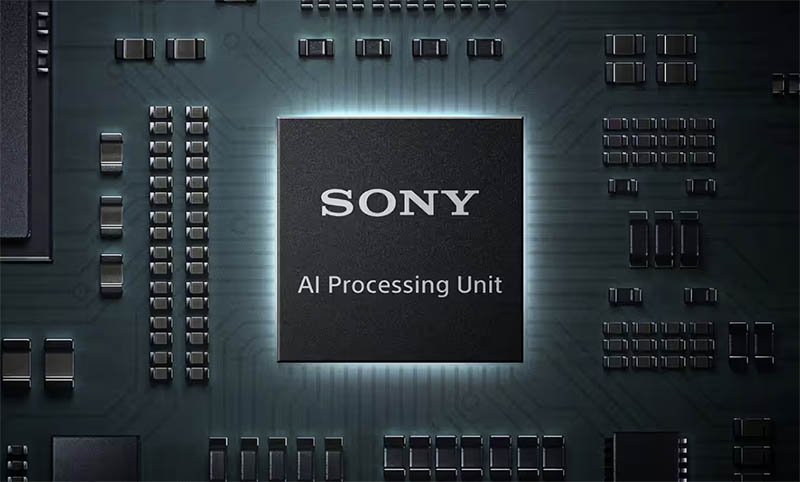
In addition to humans, animals and birds that the a7IV is capable of tracking, the a6700 can also recognize insects, cars, trains and airplanes.
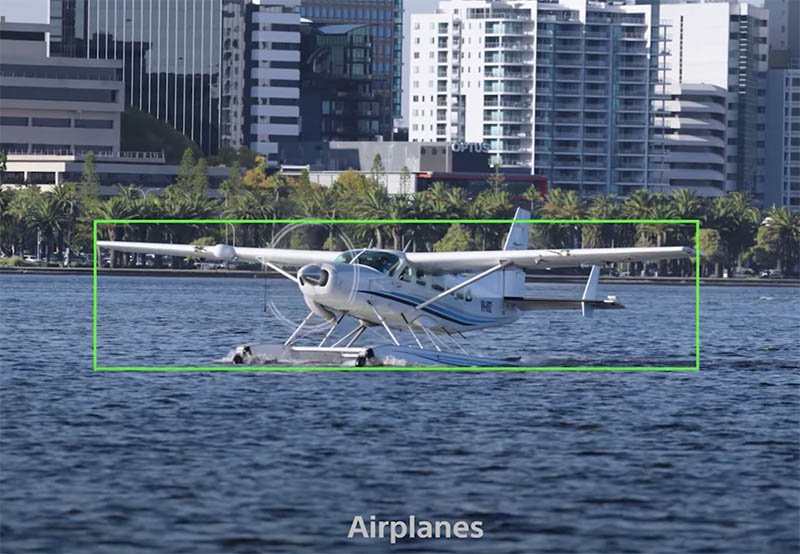
The a6700 also employs learned human forms and postures to precisely recognize body and head positions, making it possible to lock onto and track a subject facing away from the camera, or with their face partly obscured by a helmet or sunglasses.
Phase Detection Points
The a7IV offers 759 phase detection points for both stills and movies, this covers 94% of the image area. In APS-C mode with a full frame lens you get 713 phase detection points and with an APS-C lens 575 points.
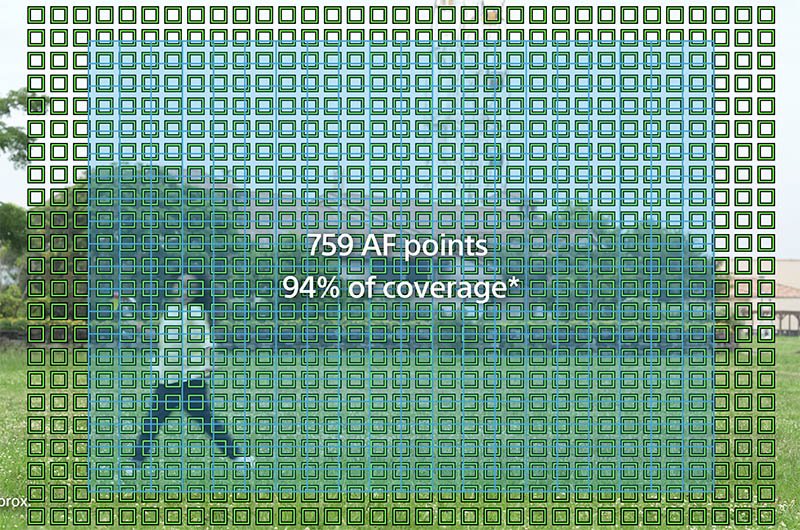
On the a6700 the 759 phase detection points cover approximately 93% of the image area when shooting stills. For shooting movies this reduces to a maximum of 495 points.
Lowlight AF Performance
When it comes to auto focusing in low light the Sony a7IV has a one stop advantage over the a6700:
- A7IV: EV-4 to EV20 (ISO 100 equivalent with F2.0 lens attached)
- A6700: EV-3 to EV20 (ISO 100 equivalent with F2.0 lens attached)
Shutter
Both cameras feature a Mechanical / Electronic shutter with a silent shooting mode.
The a7IV has a maximum shutter speed of 1/8000s when shooting stills with its mechanical and electronic shutters.
The a6700 can also shoot up to 1/8000 sec but only when utilizing its electronic shutter, its mechanical shutter is limited to 1/4000 sec.
The a7IV sports an anti-dust shutter that closes the shutter to help keep dust from the sensor when changing lenses, this feature is not available on the a6700.
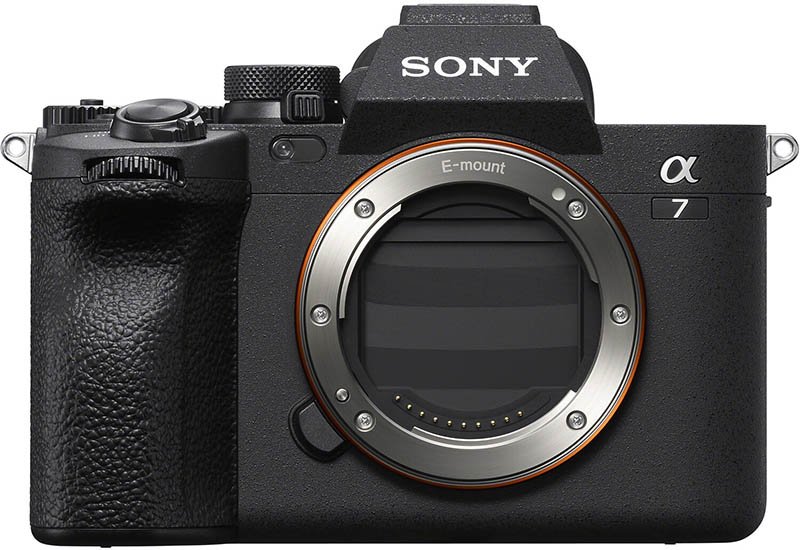
To help with flicker suppression both cameras support variable shutter that allows users to manually adjust the shutter speed and observe the effects of flickering on the camera’s monitor. This is supported for both stills and movies on both cameras.
Both cameras also support anti-flicker shooting which can time the shooting of images to moments when flickering will have less of an impact by detecting the flickering frequency automatically. On both cameras this is limited to the mechanical shutter only. The a7IV also only supports anti-flicker for stills, the a6700 supports it for both stills and movies.
Drive Speed & Buffer
The a7IV can shoot a maximum of 10 frames per second with both the mechanical and the electronic shutter. However, if you shoot in uncompressed RAW, lossless compressed RAW, uncompressed RAW + JPEG or lossless compressed RAW + JPEG then the maximum frame rate drops to 6 fps.
The a6700 supports a maximum frame rate of 11 frames per second with both its mechanical and electronic shutter. It’s currently not clear if this frame rate also drops when shooting lossless compressed RAW, I’ll hopefully be able to clarify this once the manual is released.
Buffer
There’s a very big difference in the buffer capabilities between these two cameras. When shooting with a CFexpress Type-A card in the a7IV you can shoot over 1000 images in all of the file types supported. However this does drop considerably when using a UHS-II SD card.
| JPEG L Extra Fine | Uncompressed RAW | Compressed RAW | Lossless Compressed RAW | HEIF | |
|---|---|---|---|---|---|
| A7IV | Over 1000 | Over 1000 | Over 1000 | Over 1000 | |
| A6700 | 143 | – | 59 | 23 |
Clearly the a7IV is the winner here when it comes to continuous shooting. In my Sony A7IV Memory Card Guide I’ve tested over 20 memory cards in the a7IV to how they actually perform in-camera. I’ll be doing the same for the a6700 soon.
Electronic Viewfinder and LCD Display
Now let’s take a look at how the electronic viewfinder and LCD display compare.
Electronic Viewfinder (EVF)
The a7IV has a centrally positioned 0.5-inch viewfinder with a resolution of 3.69 million dots and a magnification of 0.78x.
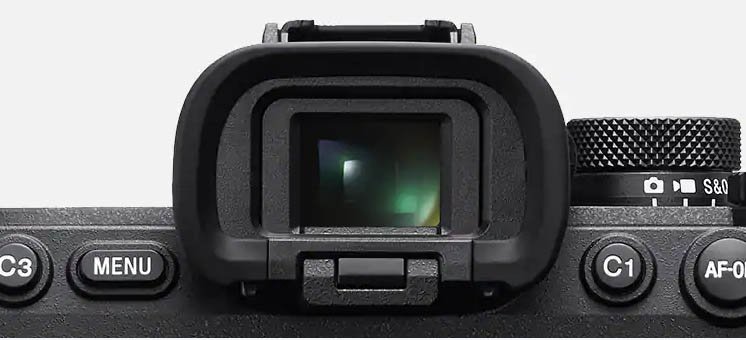
The a6700 features a smaller 0.39 inch viewfinder with a resolution of 2.36 million dots and a magnification of 0.70x. It’s located on the top left of the camera instead of the center.
Both cameras support both a 60fps and a higher 120fps mode to help display your subject’s movements more smoothly.
| Sony A7IV | Sony a6700 | |
|---|---|---|
| EVF Type | 1.3 cm (0.5 type) electronic viewfinder (Quad-VGA OLED) | 1.0 cm (0.39 type) electronic viewfinder (XGA OLED) |
| Field Coverage | 100 % | 100 % |
| EVF Resolution | 3 686 400 dots | 2,359,296 dots |
| EVF Magnification | Approx. 0.78x (with 50 mm lens at infinity, -1m) | Approx. 1.07x (35 mm camera equivalent: Approx. 0.70x) with 50 mm lens at infinity, -1 m-1 |
| EVF Eyepoint | Approx. 23 mm from the eyepiece lens, 18.5 mm from the eyepiece frame at -1m-1 (CIPA standard) | Approx. 22 mm from the eyepiece lens, 19.4 mm from the eyepiece frame at -1 m-1 (CIPA standard) |
| Refresh Rate | NTSC mode: STD 60fps / HI 120fps, PAL mode: STD 50fps / HI 100fps | NTSC mode: STD 60fps / HI 120fps, PAL mode: STD 50fps / HI 100fps |
LCD Display
Both cameras feature a 7.5 cm (3.0-type) TFT vari-angle display with 1 036 800 dots. This display makes it very easy to frame your subjects from a variety of angles or frame yourself.
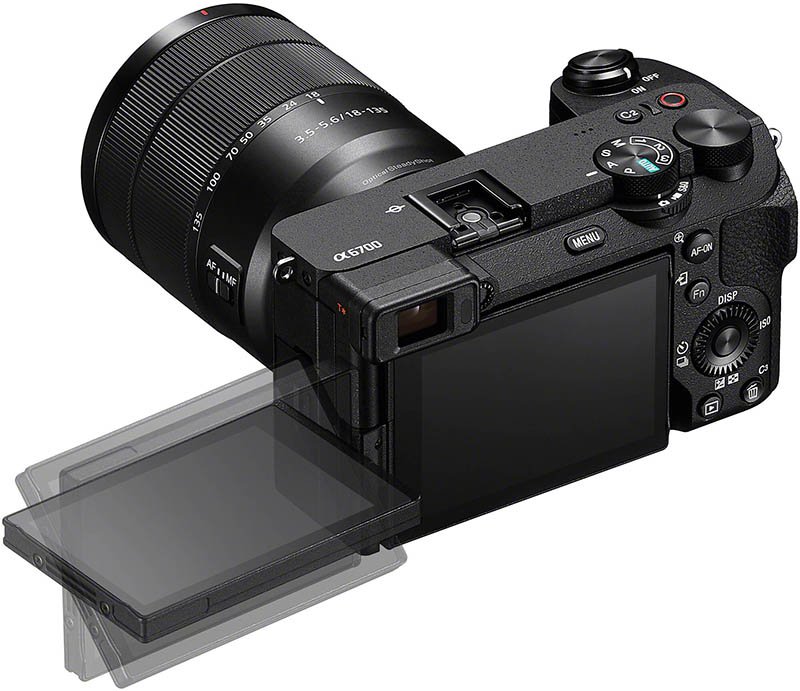
Camera Body & Controls
The a7IV is a full-frame camera and this shows in the size and weight of the body compared to the smaller APS-C format a6700.
The dimensions and weights are as follows:
- A7IV: W/H/D 128.9 x 96.9 x 80.8 mm, (approx. 658 g / 1 lb 7.3 oz with battery and memory card)
- A6700: W/H/D: 122.0 x 69.0 x 75.1 mm, (approx. 493 g / 1 lb 1.4 oz with battery and memory card)
Sony A7IV
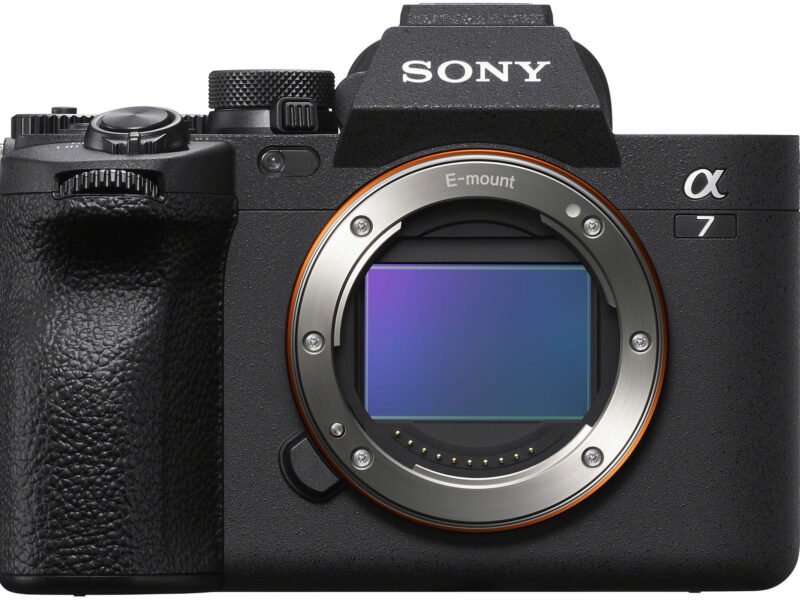
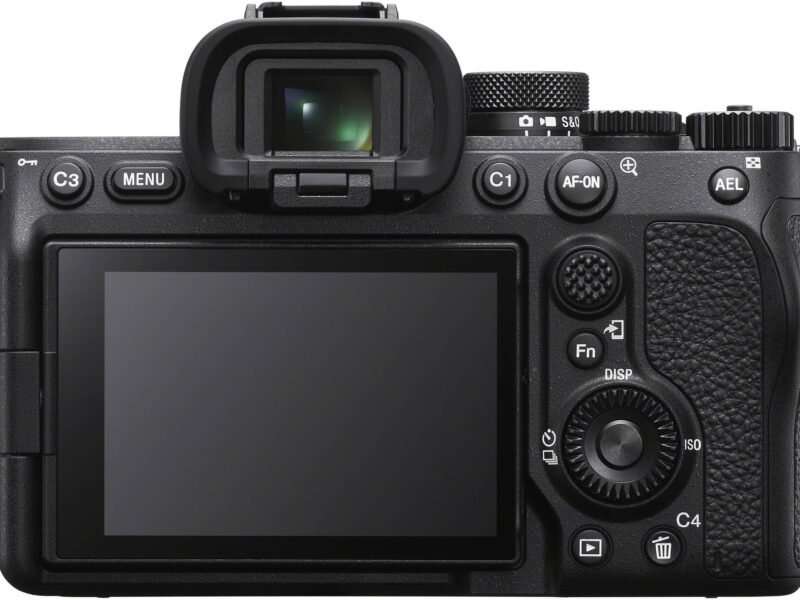
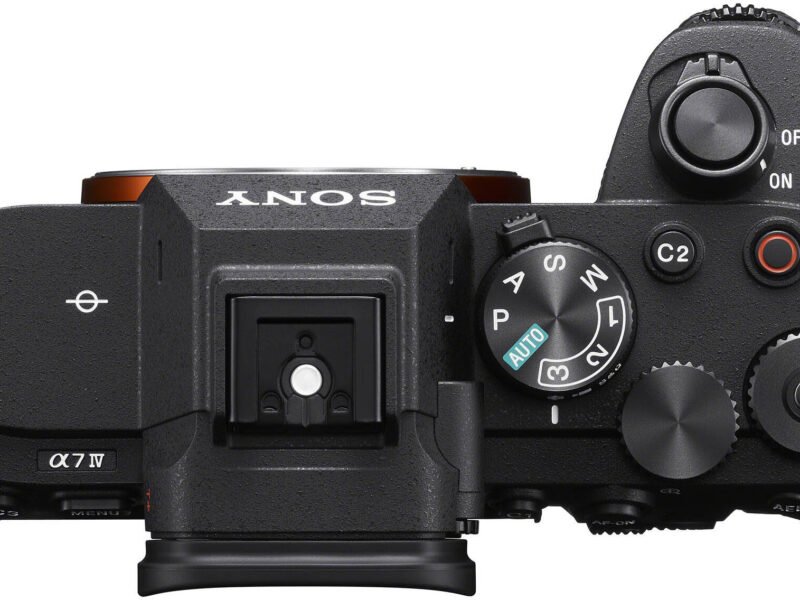
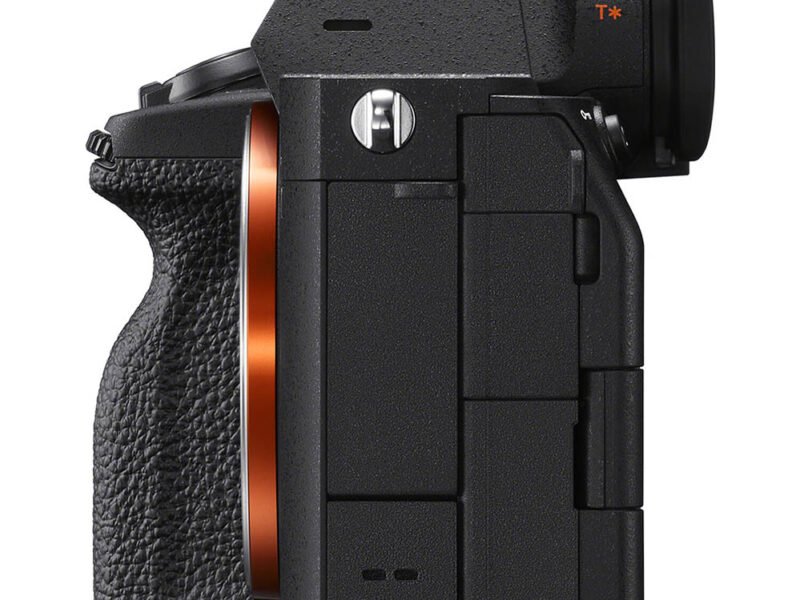
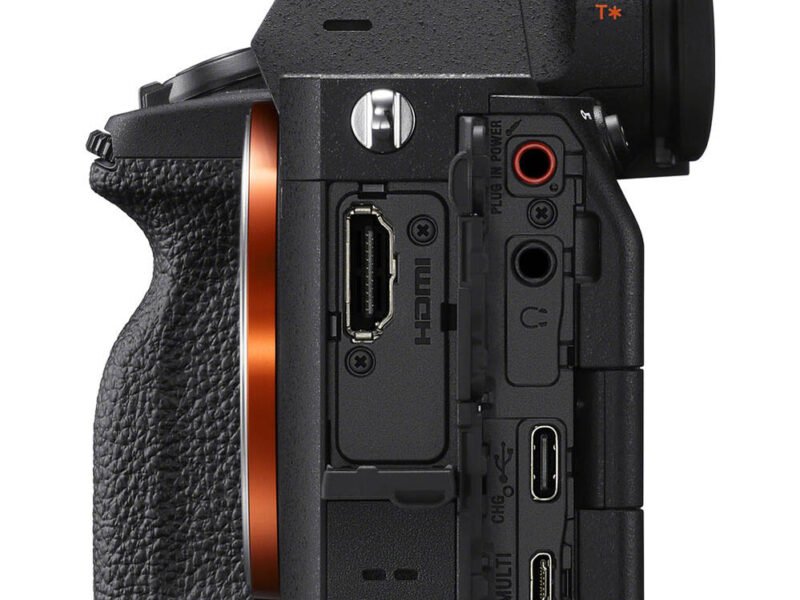
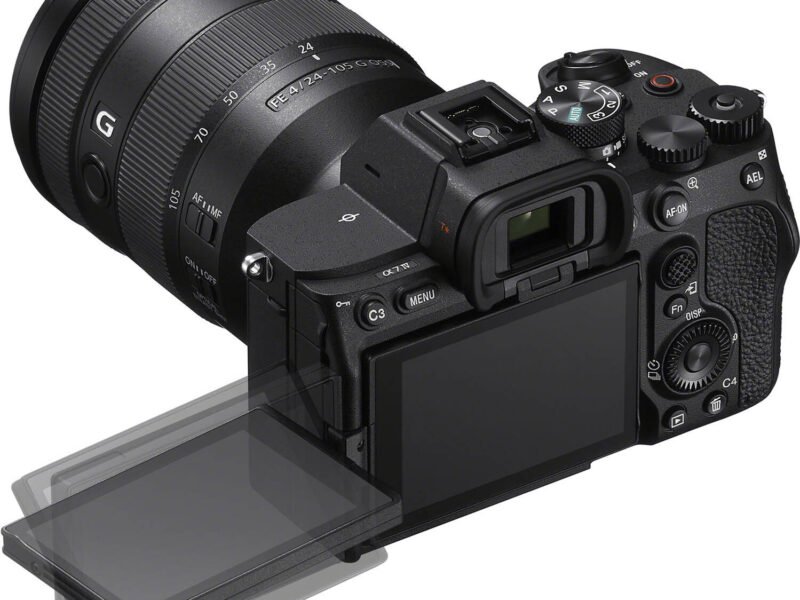
Sony A6700
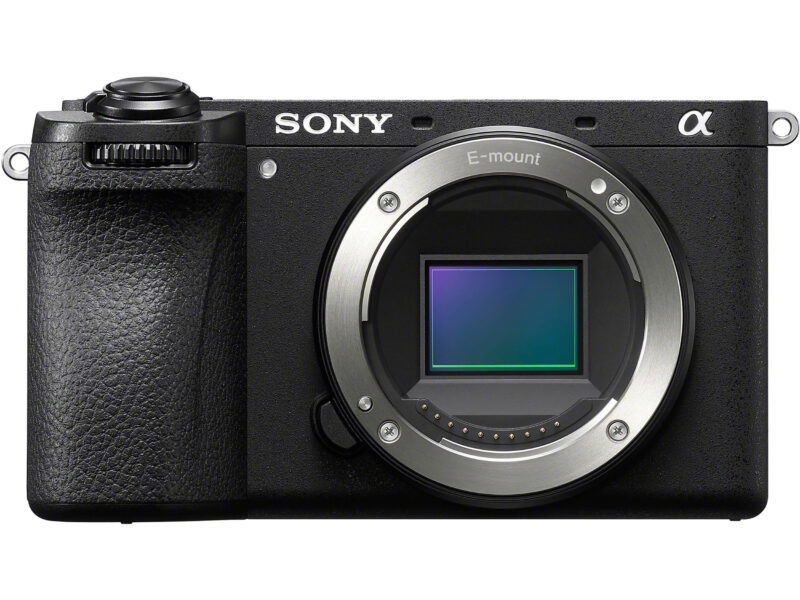
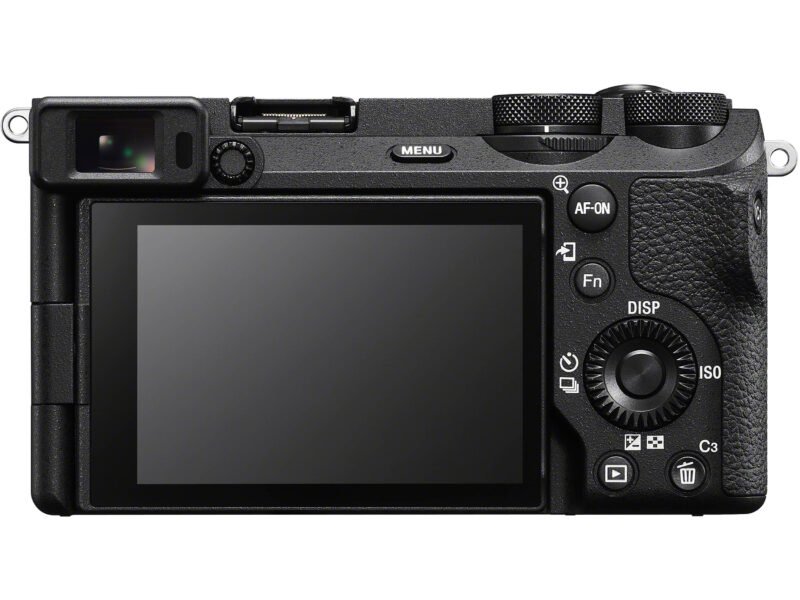
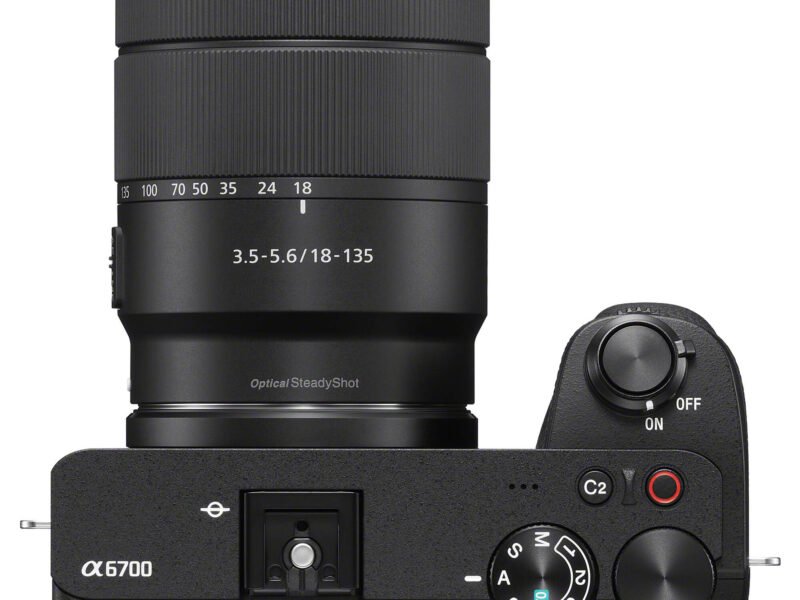

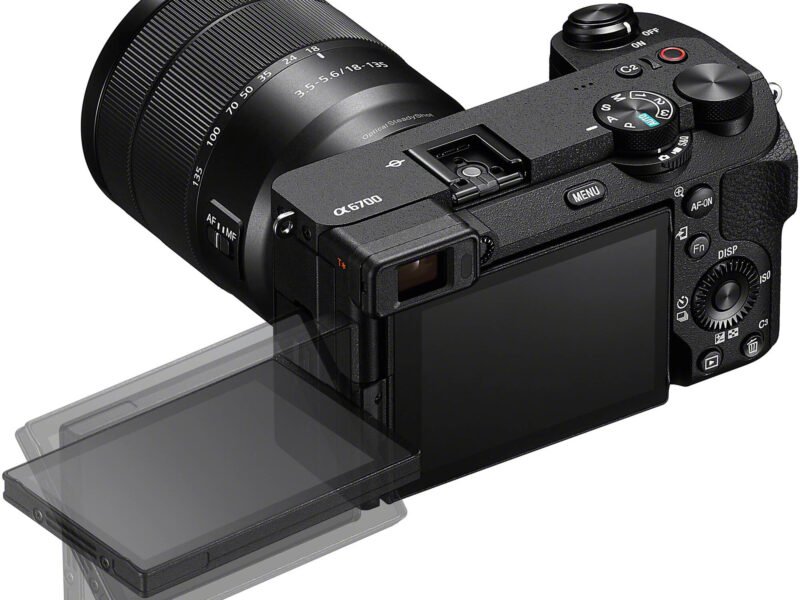
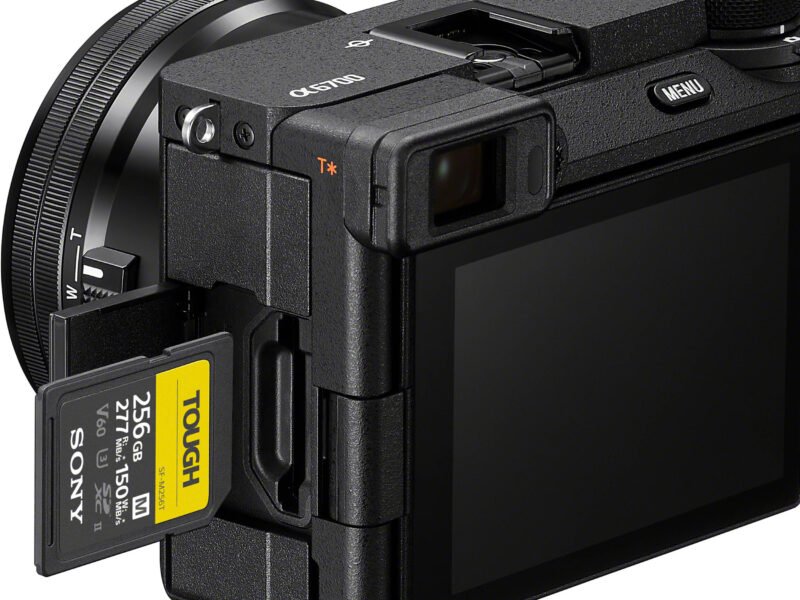
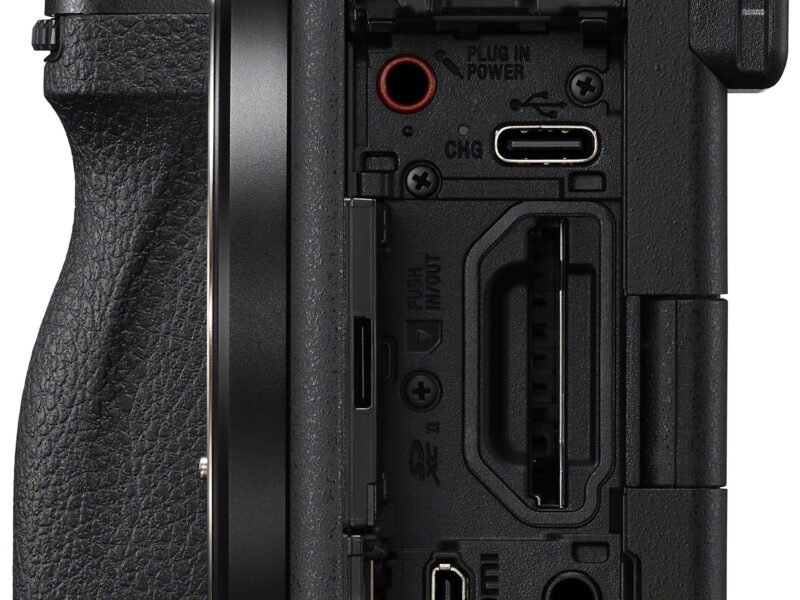


The larger body of the a7IV helps to make it a little more comfortable to hold than the a6700, especially if you have larger hands. Although if you have small hands you might actually prefer the body of the a6700.
The larger body of the a7IV also means there is more space for larger buttons and dials which help make the camera a little easier to operate.
The a7IV includes an AF joystick on the rear as well as a few extra custom buttons. There’s also an unmarked top dial which is programmed for exposure compensation by default, but this can be customized. This dial also has a lock button to help prevent accidental use.
Full-time DMF
Full-time DMF is only available on the a6700. This works when shooting stills with AF-C or AF-S autofocus. With DMF you can rotate the lens’s focus ring to switch to manual focus mode at any time, making switching focus on the fly super easy and fast. The a7IV does not support full-time DMF unless you have a lens that supports this feature.
Focus Bracketing
Focus bracketing is available on the newer a6700 but not the a7IV.
With focus bracketing the a6700 can automatically shoot up to 299 images with sequentially shifted focus points according to intervals and a sequence specified by you. Unfortunately there is no option to automatically combine images in-camera, this needs to be done in post.
Memory Cards
The a7IV features two memory card slots. Slot one is a dual memory card slot and it supports the much faster CFexpress Type-A as well as UHS-II / I SD cards. Slot 2 only supports UHS-II / I SD cards.
To find out which are the best memory cards to use in the a7IV, please visit my A7IV Memory Card Guide where I have tested over 20 cards in-camera.

The a6700 has only a single memory card that supports UHS-II / UHS-I SD cards. The memory card slot is also located on the side of the camera.
Please visit my Sony A6700 Memory Card Guide to learn more about the best memory cards for the a6700.
Battery Life & USB Charging
Both cameras support the Sony NP-FZ100 battery and in-camera charging via USB. However the battery life for shooting stills and movies does vary a little.

With the a7IV you can shoot approx. 580 shots (Viewfinder) or approx. 520 shots (LCD monitor) (CIPA standard) with a full battery. The a6700 can shoot approx. 550 shots (Viewfinder) and approx. 570 shots (LCD monitor) (CIPA standard).
For actual movie recording the a7IV will record for approx. 110 min (Viewfinder) or approx. 100 min (LCD monitor) (CIPA standard). The a6700 will get you approx. 95 min actual (Viewfinder) or approx. 100 min (LCD monitor) (CIPA standard).
Both cameras support USB PD (Power Delivery), enabling rapid battery charging directly within the camera body via USB-C.
Connectivity
Both cameras support 2.4 / 5 Ghz wireless connections for fast tethering to a PC along with bluetooth. There’s also a 3.5 mm Stereo minijack for a microphone and a headphone jack on both cameras. They also both feature a Multi Interface (MI) Shoe with built-in Digital Audio Interface.
The HDMI ports vary a little because the a7IV features a full-size Type-A HDMI port whereas the a6700 features a micro HDMI port.
Both cameras also feature a Hi-Speed USB-C 3.2 port with Power Delivery for high speed charging. According to Sony’s official specs the a7IV port is a SuperSpeed USB 10Gbps (USB 3.2) port. The a6700 official specs however specify a SuperSpeed USB-C 5 Gbps (USB 3.2) port, which might mean that it’s USB-C 3.2 Gen 1×1, or the specs could be wrong. Hopefully I can clarify this soon.
Both cameras support Sony’s newer Creators App for remote control and file management.

The Sony RMT-P1BT Bluetooth Remote (B&H Photo | Amazon) is also supported by both cameras.
What’s in the Box
The box contents of each camera are very similar.
| Sony A7IV | Sony A6700 |
|---|---|
| Sony a7IV camera body | Sony A6700 Body |
| Body Body cap: ALC-B1EM | Rechargeable Battery NP-FZ100 |
| Eyepiece cup: FDA-EP18 | Shoulder strap |
| Multi Interface Shoe Cap: FA-SHC1M | Body cap |
| Rechargeable Battery: NP-FZ100 | Accessory shoe cap |
| USB charger: AC-UUD12 | Eyepiece cup |
| Shoulder strap | |
| USB-A to USB-C cable (USB 3.2) | |
| AC adaptor Power cord |
Price
There’s a big price difference between these two cameras, with the a7IV costing around $1,100 dollars more when looking at the MRRP prices. Although if you are lucky you might find the a7IV on offer.
But the extra cost of the camera body is not the only additional cost here, because if you buy the a7IV you will also need to find some additional money to afford the more expensive full-frame lenses. In contrast, APS-C lenses are a lot cheaper as well as being lighter and more travel friendly.
- The A7IV has an MRRP of: $2,498.00 / £2,399.00
- The A6700 has an MRRP of: $1,398.00 / £1,449.00
Please check my deals page for all of the latest Sony offers or head over to B&H Photo to check the latest prices.
Conclusion
These are two very well spec’d cameras and I can understand that choosing between the two might not be the easiest of choices unless you have a preference for full-frame vs APS-C.
Thanks to its larger full-frame sensor the a7IV offers improved image quality, more megapixels, uncompressed RAW and better low light performance that the a6700. Personally I also find it to be the more comfortable camera to hold in my hands due to its larger dimensions. For fast action shooters the unlimited buffer when shooting with a CFexpress Type A Card is also very helpful.
The dedicated AI Processor in the a6700 helps it to take the clear win when we compare the autofocus capabilities, with improved algorithms and the ability to recognize insects, cars, trains and airplanes. For its price it offers excellent value for money too.
If you shoot more video than stills then the support of 4K60p on both cameras might be very tempting. However, the a6700 has a slight advantage in the video department with the addition of 4K120p, although this is with a heavy 38% crop. Vloggers might also find the auto framing feature of the a6700 useful.
I shall leave the decision on which camera to buy up to you, please just let me know which camera you decide to go for in the comments below, or if you have any questions.
Finally. Please don’t forget to take a look at our friendly Alpha Shooters Community Forum before you leave. Thank you!
Reviews
To learn more about these two cameras I’d recommend watching the following reviews from Gordon Laing.
Sony A7IV Guides & Resources
Sony A7 IV Forum & Facebook Group
If you are looking for further help and advice on the a7 IV or would simply like to share your photos and videos, then please head over to our friendly full-frame Forum. If you prefer Facebook then we also run the Sony A7 IV Shooters Group.
Sony A6700 Guides & Resources
Sony A6700 Forum & Facebook Group
If you are looking for further help and advice on the A6700 or would simply like to share your photos and videos, then please head over to our friendly APS-C Forum. If you prefer Facebook then I also run the Sony A6700 + A6600 Shooters Group.


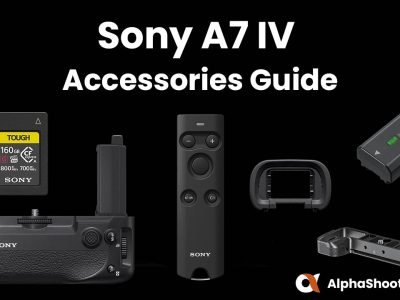
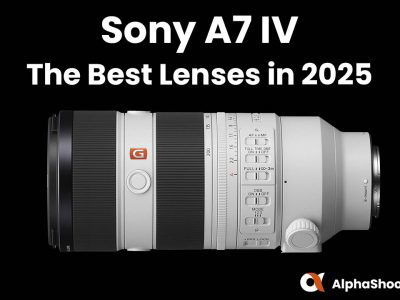
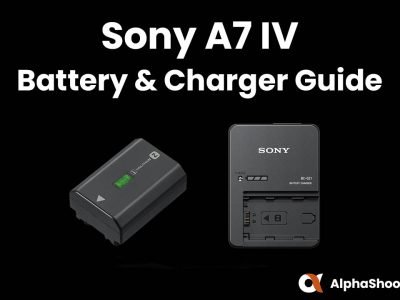
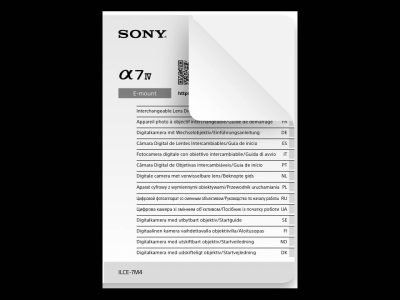
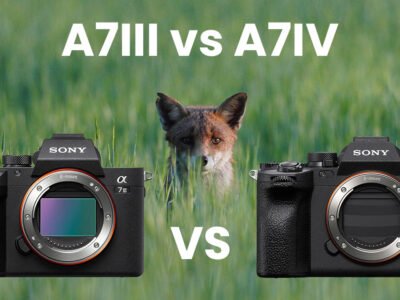
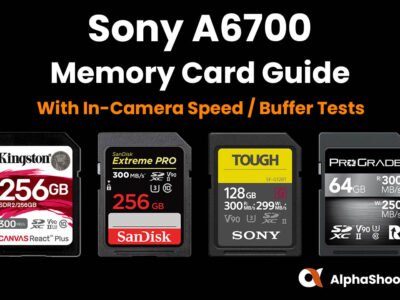

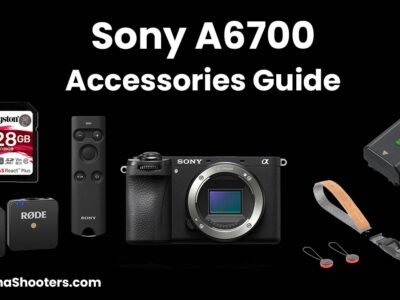
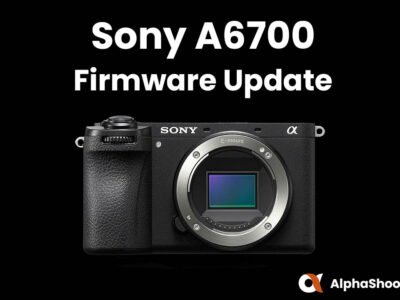
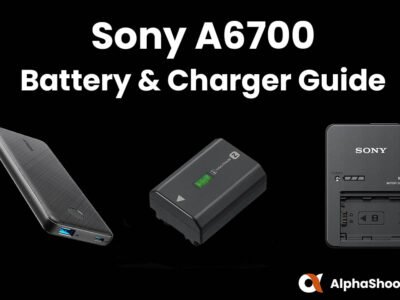



Thanks for the awesome comparison. You have the best camera articles. 🙂
Glad that you liked it Jonathan and thanks for taking the time to comment 🙂